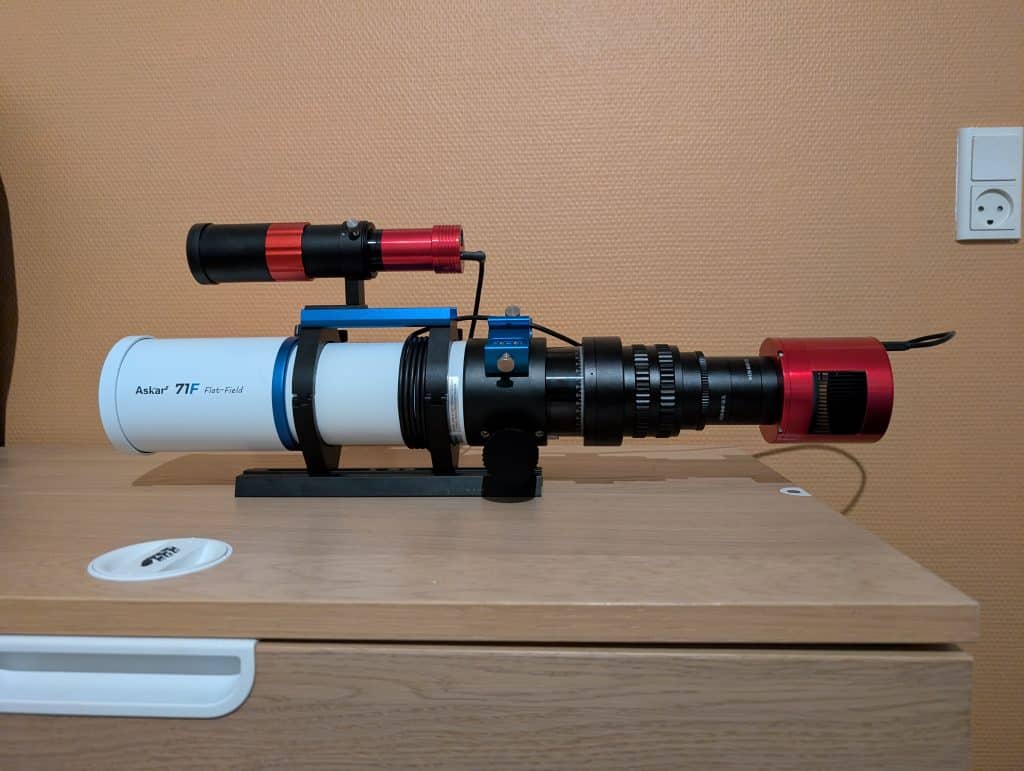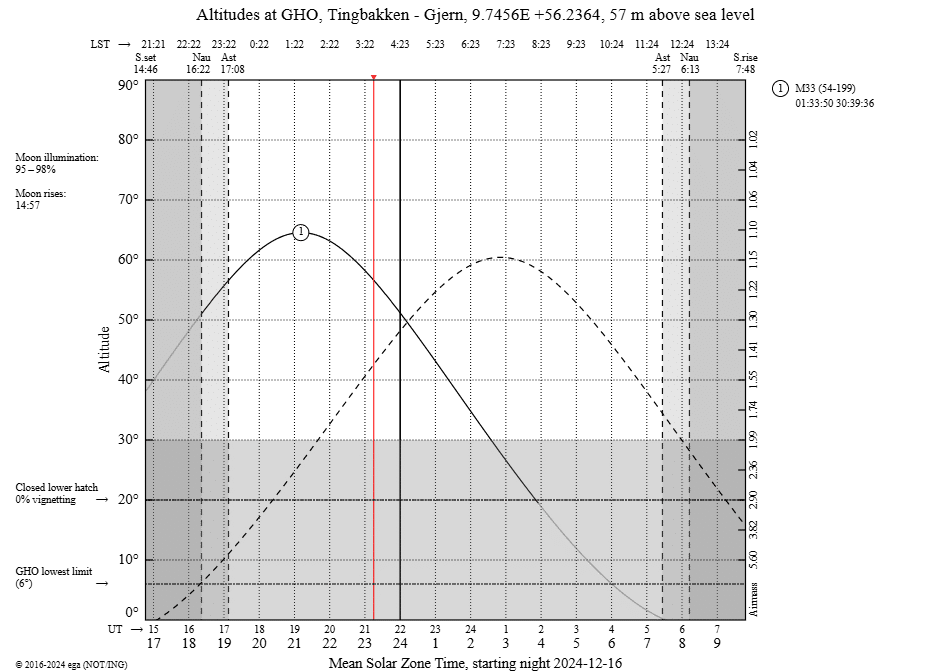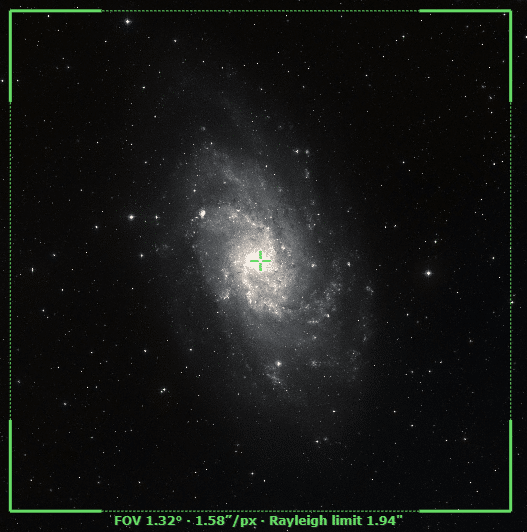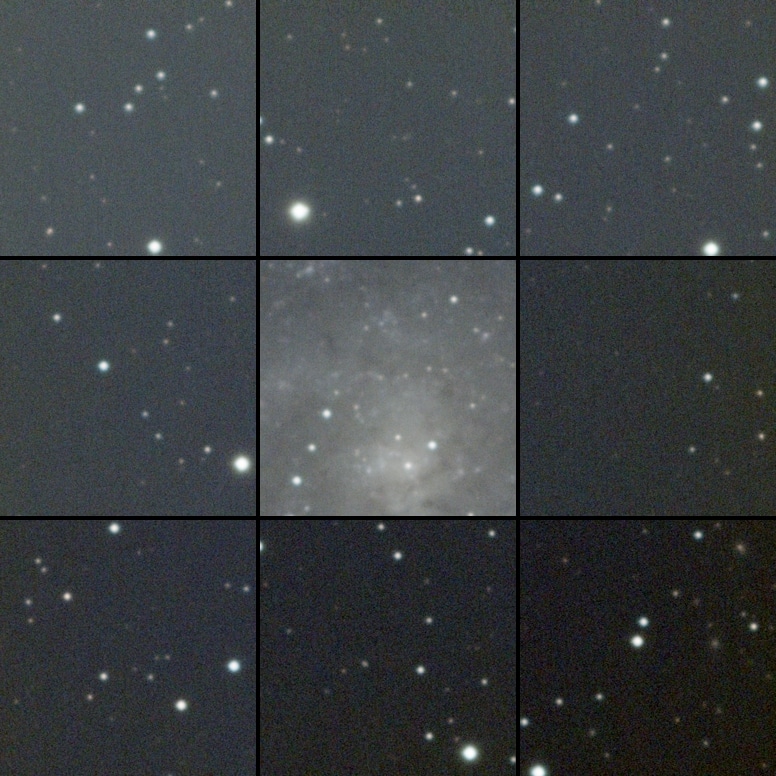Table of Contents
So apparently Santa Claus came around early this year. In my Christmas stocking, he left a brand new ZWO ASI533MC Pro. In this article, I will review my first light experiences with this camera.

The ASI533MC Pro
The ASI533MC Pro camera is produced by the Chineese company ZWO which is well known for their astrophotography equipment which are of the highest standards. This camera is equipped with the SONY back-illuminated IMX533 sensor. This sensor is a 1 inch square fame sensor well suited for deep sky astrophotography.

Effectively the sensor has an image area of 11.31 x 11.31 mm and a resolution of 3008 x 3008 pixels. The 14 Bit ADC allow for a high signal-to-noise ratio, paired with a very low read noise as low as 1.0e. The camera is capable of cooling to 35 degrees Celsius below ambient temperatures. Further more the camera provide a large full well capacity of 50000e and a peak quantum efficiency of around 80%. This should be very superior to my trusty old Nikon Z5. This camera should also be far easier to balance on the Star Adventurer GTi, due to its cylindrical shape.
Planing first light observations
Saturday the weather forecast looked somewhat promising, I decided to take the opportunity and see if I could get some data with the new camera despite the conditions not being perfect. Having a full moon to battle and passing clouds I managed to do almost 2 hours of good observations using the new ASI533MC Pro and the Askar 71F Flat-Field.
Since the weather forecast was not too promising I wanted to observe a target that I had been observing previously to compare the difference. Hence I decided to opt for a galaxy. After inspecting the Visibility plot – I decided to go for M33 – the Triangulum galaxy, since it would fit the combination of sensor and telescope perfectly.


As seen in the figures above M33 was high in the sky at the beginning of the night which was ideal since the weather was promising until about 21.00. In this period the bright moon was also quite far from the galaxy, to avoid excessively light polluting the image. On the figure to the right Telescopius has been used to generate a view of what the galaxy potentially might look like through this setup. The galaxy will fill the frame very nicely. To see my previous attempt to capture M33, please refer to the portfolio
Data inspection after first light
In the past couple of months I have been using the Askar 71F with my Full Frame Nikon Z5 and I have seen no chromatic aberration, hence I was confident that I would not have any issues with this much smaller sensor. But inspecting the data is important, below you can see my raw stack, unedited, the only process that has been applied is the SpectroPhotometricColorCalibration, the Screen Transfer Function and the Histogram Transformation.
Inspection of the subframes
In the samples provided below you can see just how clean the data is. Based on just 55 frames of 120 seconds each the signal to noise is impressive. there is no sign of aberration in the image, but just to make sure I created an inspection panel. This inspection panel can be seen on the right. Again there is no sign of chromatic aberration neither at the edges nor at the center of the image. The Askar 71F does an outstanding job of creating a flat field.


After inspection of the raw stack I did some processing, on the stack and the result can be seen at the end of the article. But the final image lack some data. However I am quite pleased with the performance of the camera, as the full moon was out I do not have any cut-filters to block the moon light, so all the data were captured without any use of filters.
Thoughts after first light
I am absolutely blown away by the quality of this camera – the data are so clean in comparison with my Nikon Z5 and the speed at which the ASIair mini handle the data flow was much better than the files from the Nikon Z5.


